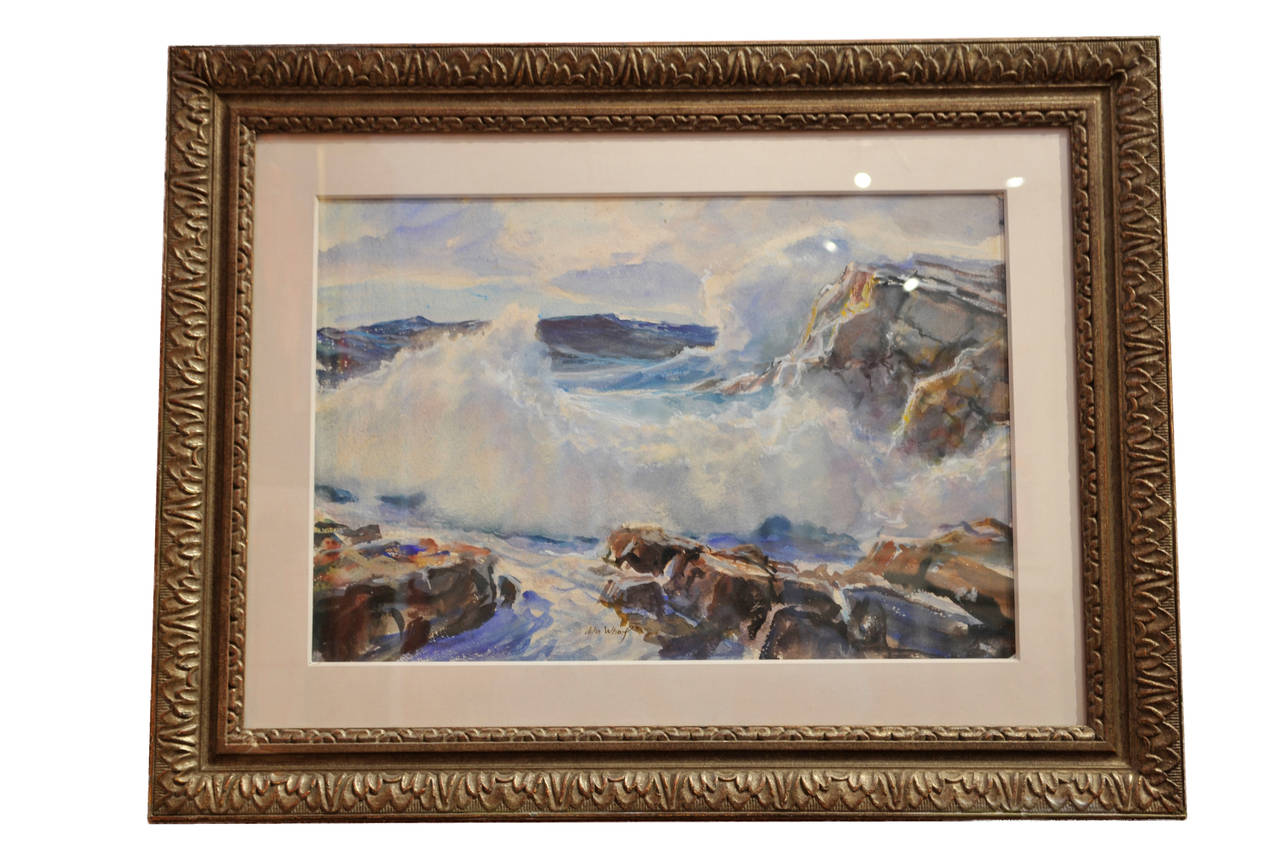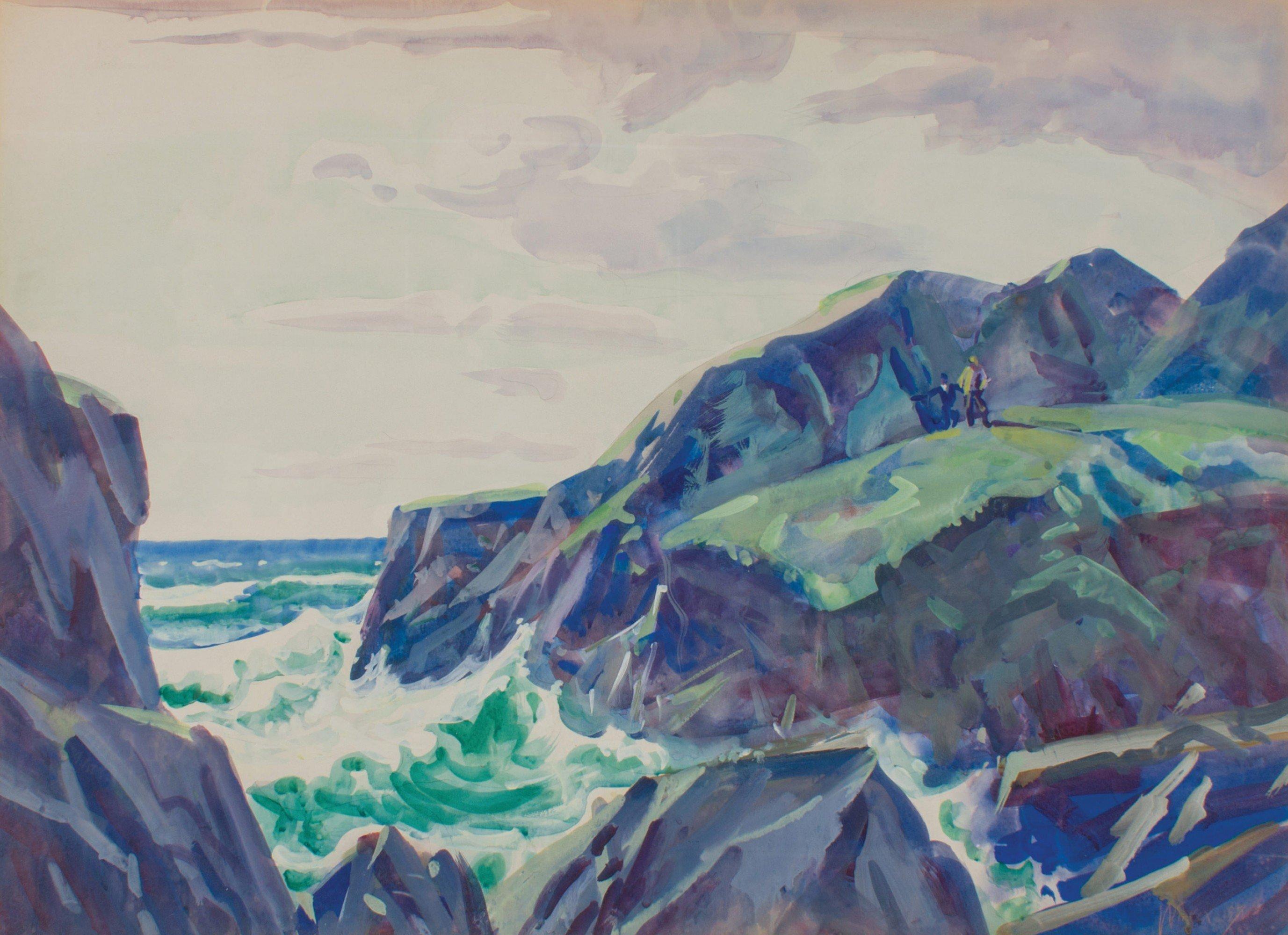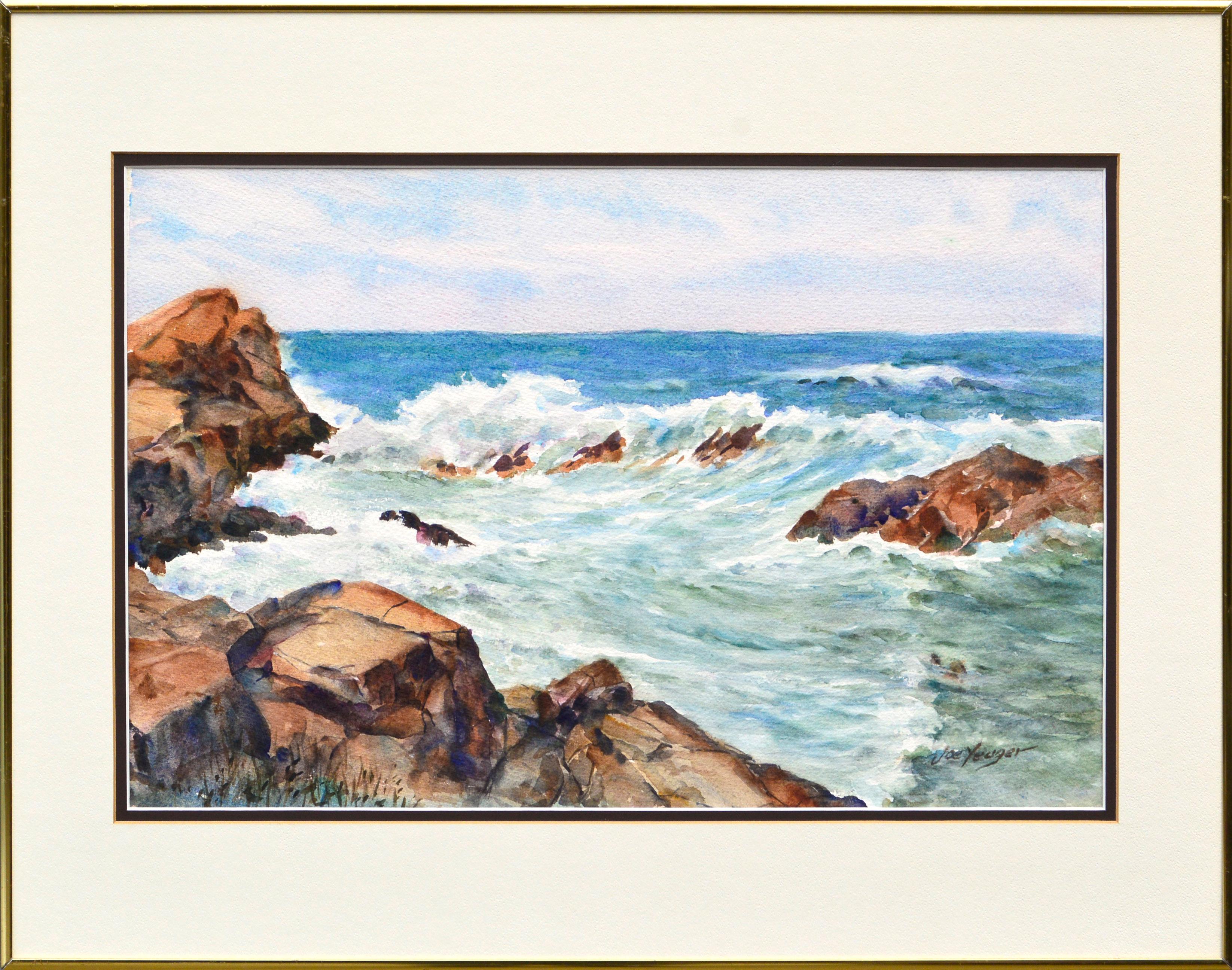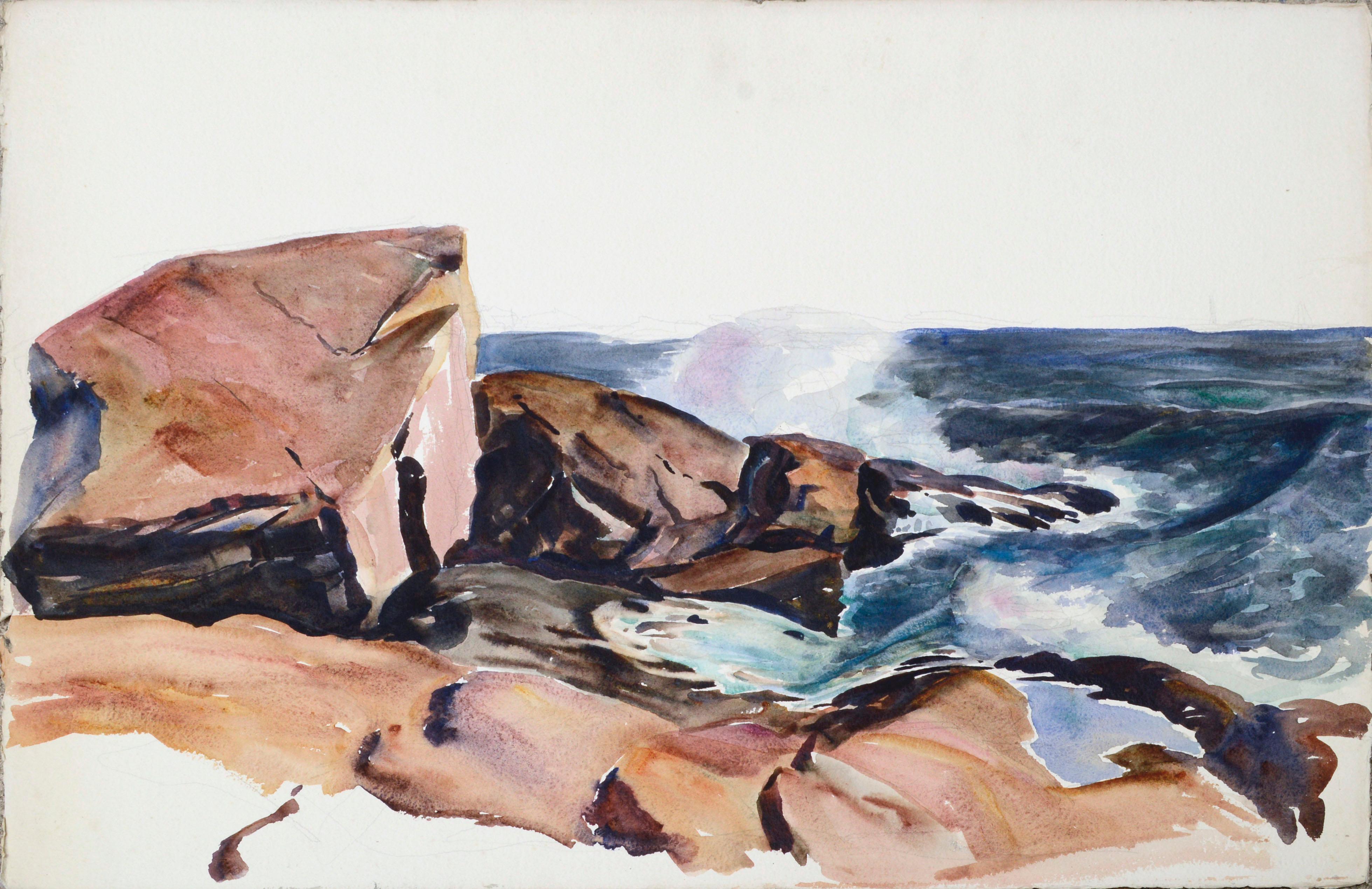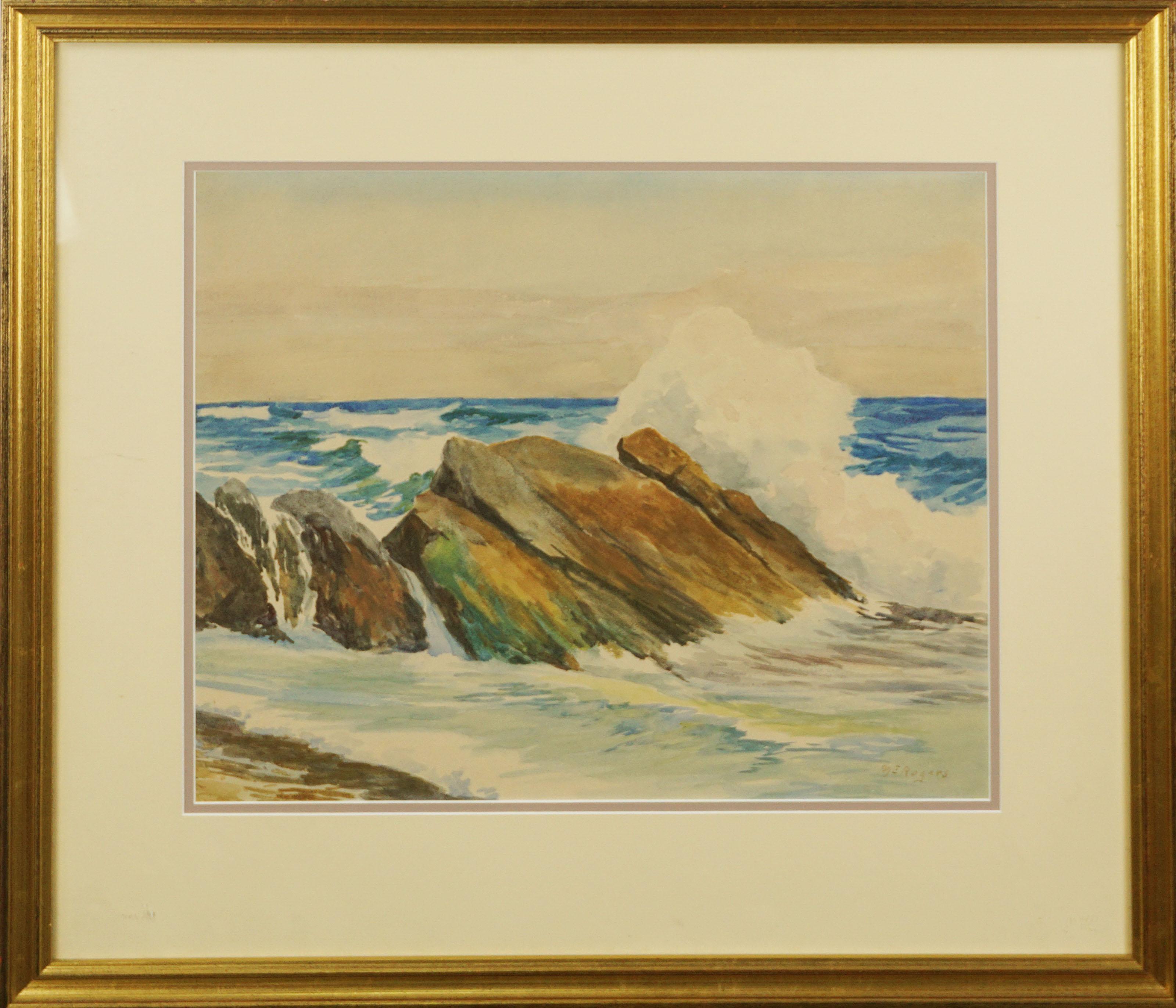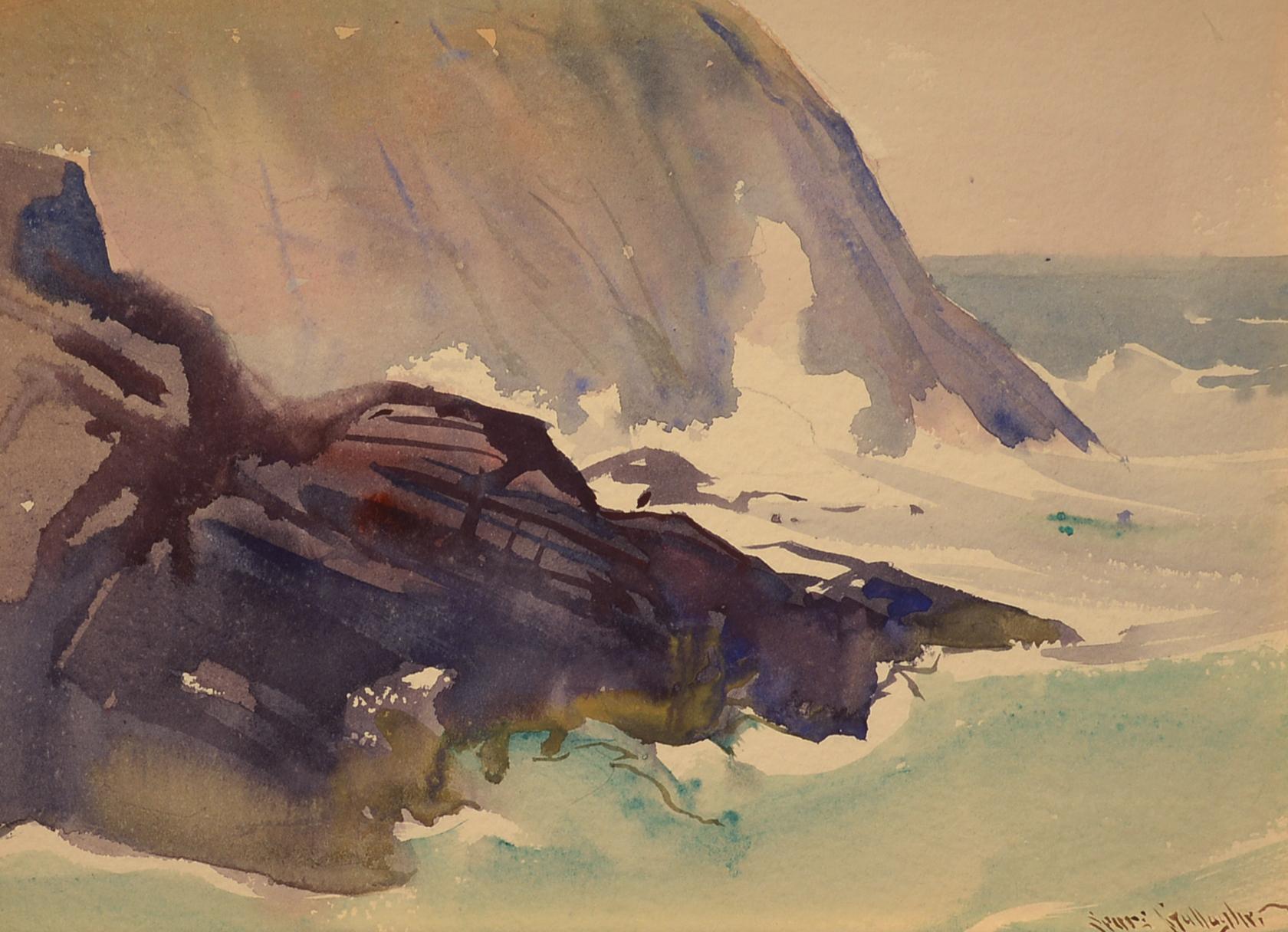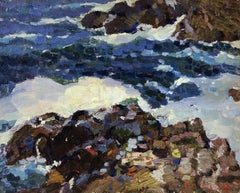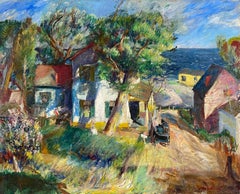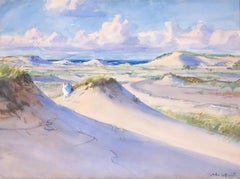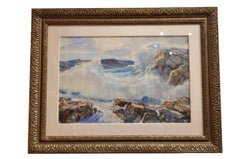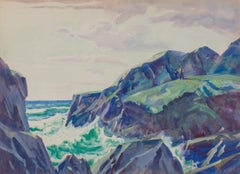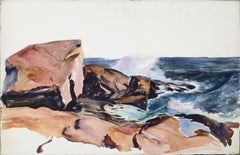John WhorfCrashing Waves
About the Item
- Creator:John Whorf (1903-1959, American)
- Dimensions:Height: 14.5 in (36.83 cm)Width: 18 in (45.72 cm)
- More Editions & Sizes:nonePrice: $12,500
- Medium:
- Period:
- Condition:Excellent condition. The watercolor has been recently conserved. Evidence of natural aging and deterioration is commensurate with materials.
- Gallery Location:Bryn Mawr, PA
- Reference Number:1stDibs: LU2773215034502
John Whorf
John Whorf was a master watercolorist and a native of Boston. He was known for his depictions of genre subjects and views of harbors and beach scenes. He studied painting at the St. Botolph Studio and School of the Museum of Fine Arts at Tufts University in Boston, and at the Académie de la Grande Chaumière and École Nationale supérieure des beaux-arts in Paris. Whorf was awarded an honorary M.A. degree from Harvard University in 1938 and received a medal in 1938 and a prize in 1939 from the Art Institute of Chicago. His first exhibition of 52 paintings, when he was 20, sold out. After many years of traveling, Whorf spent the last years of his life in Provincetown, Massachusetts, and was part of its art colony for many years. He died there in 1959.
- ShippingRetrieving quote...Shipping from: Bryn Mawr, PA
- Return Policy
More From This Seller
View All20th Century American Modern Landscape Paintings
Oil
1930s Post-Impressionist Landscape Paintings
Canvas, Oil
20th Century Landscape Drawings and Watercolors
Watercolor
Late 19th Century American Impressionist Landscape Drawings and Watercolors
Paper, Watercolor
20th Century American Modern Landscape Paintings
Oil
1880s Realist Landscape Paintings
Canvas, Oil
You May Also Like
20th Century Landscape Drawings and Watercolors
Paper, Watercolor
1950s American Modern Figurative Drawings and Watercolors
Graphite, Watercolor
Mid-20th Century American Impressionist Landscape Drawings and Watercolors
Paper, Watercolor
Mid-20th Century American Realist Landscape Drawings and Watercolors
Paper, Watercolor
1950s American Impressionist Landscape Drawings and Watercolors
Paper, Watercolor
Early 20th Century Realist Landscape Drawings and Watercolors
Watercolor
